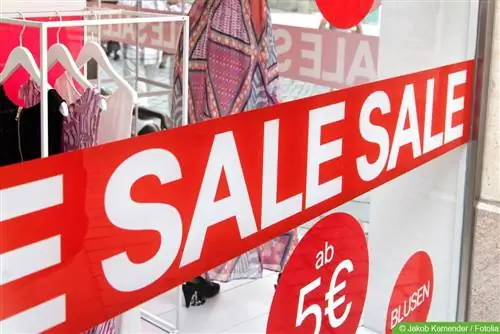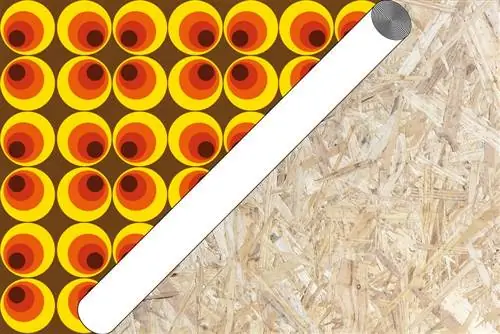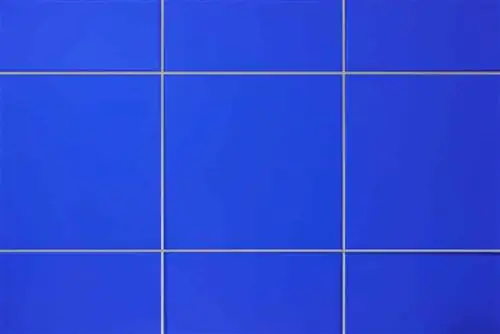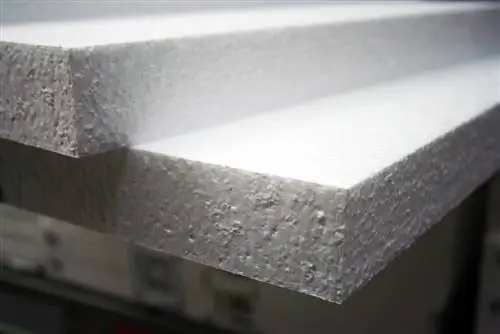- Author admin [email protected].
- Public 2023-12-17 03:39.
- Last modified 2025-01-24 12:45.
Removing wallpaper to re-plaster, paint or wallpaper a wall is by no means a popular job. However, removing fiberglass wallpaper is particularly difficult because the glue and wallpaper are waterproof and very firmly bonded to the wall. Therefore, it is crucial to pay attention to a few points when replacing. We reveal what’s important.
Security
Removing fiberglass wallpaper poses a he alth risk as tiny particles can be released from the wallpaper during removal and can be inhaled or get into the eyes. If they are to be removed, protection must be considered first and foremost.
Requires:
- well-fitting safety glasses
- a breathing mask
- Gloves
After work, all residues should be vacuumed thoroughly and clothing, skin and hair washed.
Aids
One of the advantages of fiberglass wallpaper is that it is washable. They are also attached to the wall with a dispersion adhesive, which ensures a very strong hold and allows them to be attached even in rooms with high humidity.
These same advantages, however, pose a challenge when removing them. Because unlike woodchip wallpaper, the strips cannot be sprayed with water and softened, which makes removing them much easier. Therefore, other tools are required for removal. You will need a spatula, masking tape and, if necessary, a sander.
Dry stripping
First you should check whether it is real fiberglass or non-woven wallpaper with a fiberglass coating. With real fiberglass wallpaper, the melted glass fibers are also visible on the back of the panels. This is very difficult to remove.
With coated versions, fleece is visible on the back. With these it is possible to soak the sheets before removing them, making the work easier.
Real fiberglass wallpapers do not soften. Therefore, the following steps are required for removal:
- Baseboards, windows and doors are taped off for protection.
- First remove the lower edges of the wallpaper with the spatula. To make this start, a lot of patience is required. It is best if the loosened edges are about two centimeters wide so that they can be easily gripped with your fingers or pliers.
- Starting from here, the tracks are removed centimeter by centimeter with a slight upward pull. You have to be very careful when doing this, because pieces of the plaster could come off along with the wallpaper and be torn out. If necessary, it is better to use a spatula instead of using more force to remove the wallpaper strips.
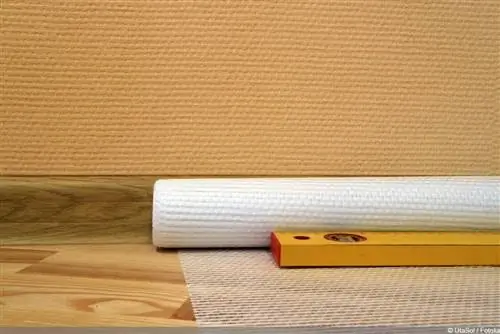
Because the wallpaper can only be removed very slowly and with difficulty, the work takes a lot of time and is tiring. Especially in larger rooms, it can make sense to have several helpers and to spread the distance over several days.
Sanding
Even with a very careful and coordinated approach, it can happen that the wallpaper cannot be completely removed by peeling it off and any residue has to be sanded off. Sanding is also an alternative to stripping. With this method there is no need to peel off the wallpaper at the edges. However, skirting boards, door and window frames still need to be protected.
The walls are then sanded evenly using a sander. This measure can also take some time. In addition, many particles are detached and stirred up during grinding, which is why eyes, mouth and nose should be very well protected.
Alternatives for detachment
Since removing fiberglass wallpaper can be very difficult, alternatives should be considered. This is particularly advisable if the wallpaper has been pasted over older plaster. Because then the risk is particularly high that pieces will come loose from the plaster and it will be necessary to repair holes or re-plaster the entire wall.
The easiest and most cost-effective alternative is to paint over the wallpaper. With fiberglass wallpaper this is possible at least ten times. The wall can therefore be redesigned again and again. If you no longer like the structure, there are still two alternatives. On the one hand, the wall can be re-plastered. It is possible to leave the wallpaper on the wall and use it directly as a base for the plaster. The second alternative is to wallpaper over the fiberglass. This is not ideal, but in some cases it is possible.
The following points are important:
Choose the right wallpaper
So that the fiberglass wallpaper does not show through later, the new wallpaper should be as high quality and thick as possible.
Testing paste
Before entire strips are installed, you should test in an inconspicuous area whether the new wallpaper will hold. If this is not the case, a different type of glue should be used.
Preparing the wall
The chances of successfully wallpapering can be improved if the wall is lightly roughened beforehand. The fiberglass wallpaper does not have to be completely sanded down to the plaster. This is easier than removing it completely, but reduces the structure and can increase the hold of the new wallpaper.


